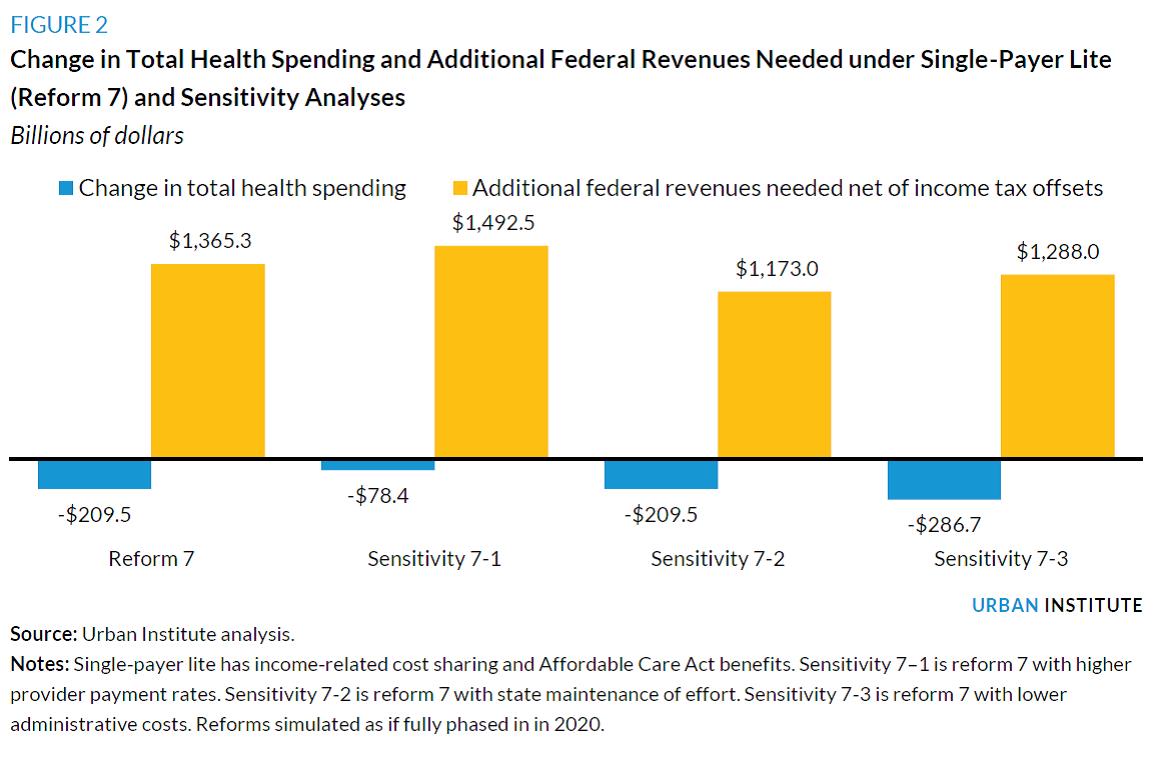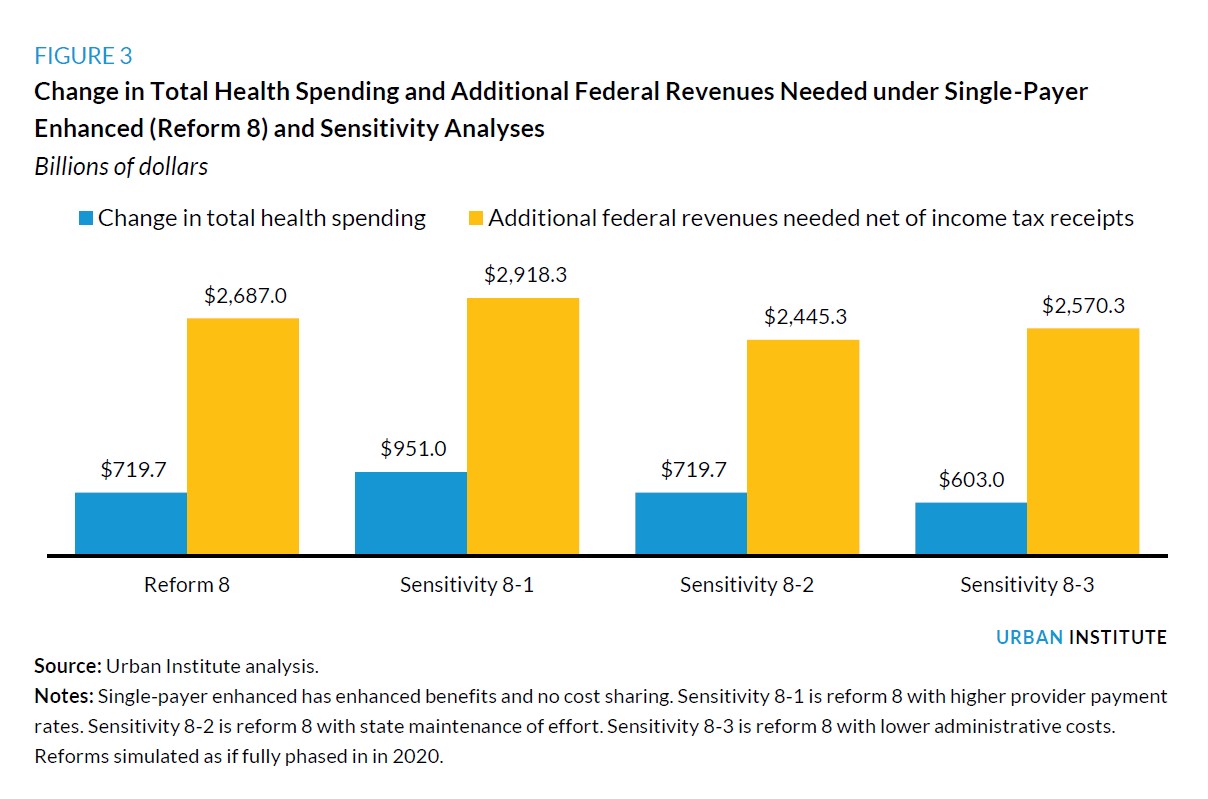The Costs of “Free” Health Care
Libertarian columnist P.J. O’Rourke once famously claimed that “If you think health care is expensive now, wait until you see what it costs when it’s free.” A left-of-center think-tank recently confirmed O’Rourke’s assertion. In analyzing several health care proposals, the Urban Institute demonstrated how eliminating patient cost-sharing from a single-payer system would raise total health care spending by nearly $1 trillion per year.
Those estimates have particular resonance given the recent release of a health care “plan” (such as it is) by Sen. Elizabeth Warren (D-Mass.). Warren’s policy proposals contain myriad gimmicks and rosy scenarios, all designed to hide the obvious fact that one cannot impose a $30 trillion-plus program on the federal government without asking middle-class families to pay—a lot—for its cost.
The Urban Institute estimates show that a single-payer plan maintaining some forms of patient cost-sharing (i.e., deductibles, co-payments, etc.) seems far more feasible—or less unfeasible—than the approach of Warren and Sen. Bernie Sanders (I-VT), who promise unlimited “free” health care for everyone. Mind you, I would still oppose such a plan—for its limits on patient choice, economically damaging tax increases, and likelihood of government rationing—but at least it would have the advantage of being mathematically possible. Not so with Sanders’ and Warren’s current approach.
Option 1: An Obamacare-Like Single-Payer Plan
In the October policy paper, several Urban researchers examined the financial effects of various health coverage proposals, including two hypothetical single-payer systems. The first single-payer system would cover all individuals legally present in the United States. Urban modeled this system to cover all benefits required under Obamacare, and fund 80 percent of Americans’ expected health costs per year, equivalent to a Gold plan on the Obamacare exchanges. Americans would still pay the other 20 percent of health spending out-of-pocket.
This proposed “lite” single-payer system would still require massive tax increases—from $1.4-$1.5 trillion per year. But it would actually reduce total health spending by an estimated $209.5 billion compared to the status quo.
This single-payer system generates calculated savings because Urban assumed the plan would pay doctors current rates under the Medicare program, and pay hospitals 115 percent of current Medicare rates. Because Medicare pays medical providers less than private insurers, moving all patients to these lower rates would reduce doctors’ and hospitals’ pay—which could lead to pay and job cuts for health professionals. But in the Urban researchers’ estimates, it would lower health spending overall.

Option 2: ‘Free’ Health Care Costs a Lot of Money
Compare these outcomes to a proposal closely modeled on the single-payer legislation supported by Sanders and Warren. Unlike the first proposal, this “enhanced” single-payer system would cover “all medically necessary care,” with “no premiums or cost-sharing requirements.” It would also enroll all U.S. residents, including an estimated 10.8 million illegally present foreign citizens.
The Urban researchers found that the single-payer plan with no cost-sharing would raise total health spending by $719.7 billion compared to the status quo. Compared to the “single-payer lite” plan, which provides benefits roughly equivalent to Obamacare, eliminating cost-sharing and covering foreign citizens would raise total health spending by $929.2 billion. Moreover, the plan with no cost-sharing requires a tax increase nearly double that of the “single-payer lite” plan—a whopping $2.7-$2.8 trillion per year.

The Urban Institute estimates confirm that making all health care “free,” as Sanders and Warren propose, would cause an enormous increase in the demand for care. This would overwhelm any potential savings from lower payments to doctors and hospitals, meaning the health sector would face a double-whammy, of getting paid less to do more work. These estimates also could underestimate the growth in health spending, because Urban’s researchers did not assume a rise in medical tourism or immigration when calculating the increase in demand for “free” health care.
Socialists’ ‘Solution’: Hold Costs Down by Rationing
Socialist supporters of Sanders’ plan attacked these estimates, claiming that the Urban Institute failed to consider that a single-payer system would ration access to “free” health care. The People’s Policy Project called Urban’s estimates of increased demand “ridiculous,” in part because “there is still a hard limit to just how much health care can be performed because there are only so many doctors and only so many facilities.”
Its position echoes that of the socialist magazine Jacobin, which in response to a single-payer study by the Mercatus Center last year admitted that “aggregate health service utilization is ultimately dependent on the capacity to provide services, meaning utilization could hit a hard limit.”
An increase in health spending of nearly $1 trillion per year, and increased waiting times and rationed access to care: either or both of those scenarios represent the costs of “free” health care, based on the words of leftists themselves. The prospect of either scenario should make Americans reject this socialist approach.
This post was originally published at The Federalist.